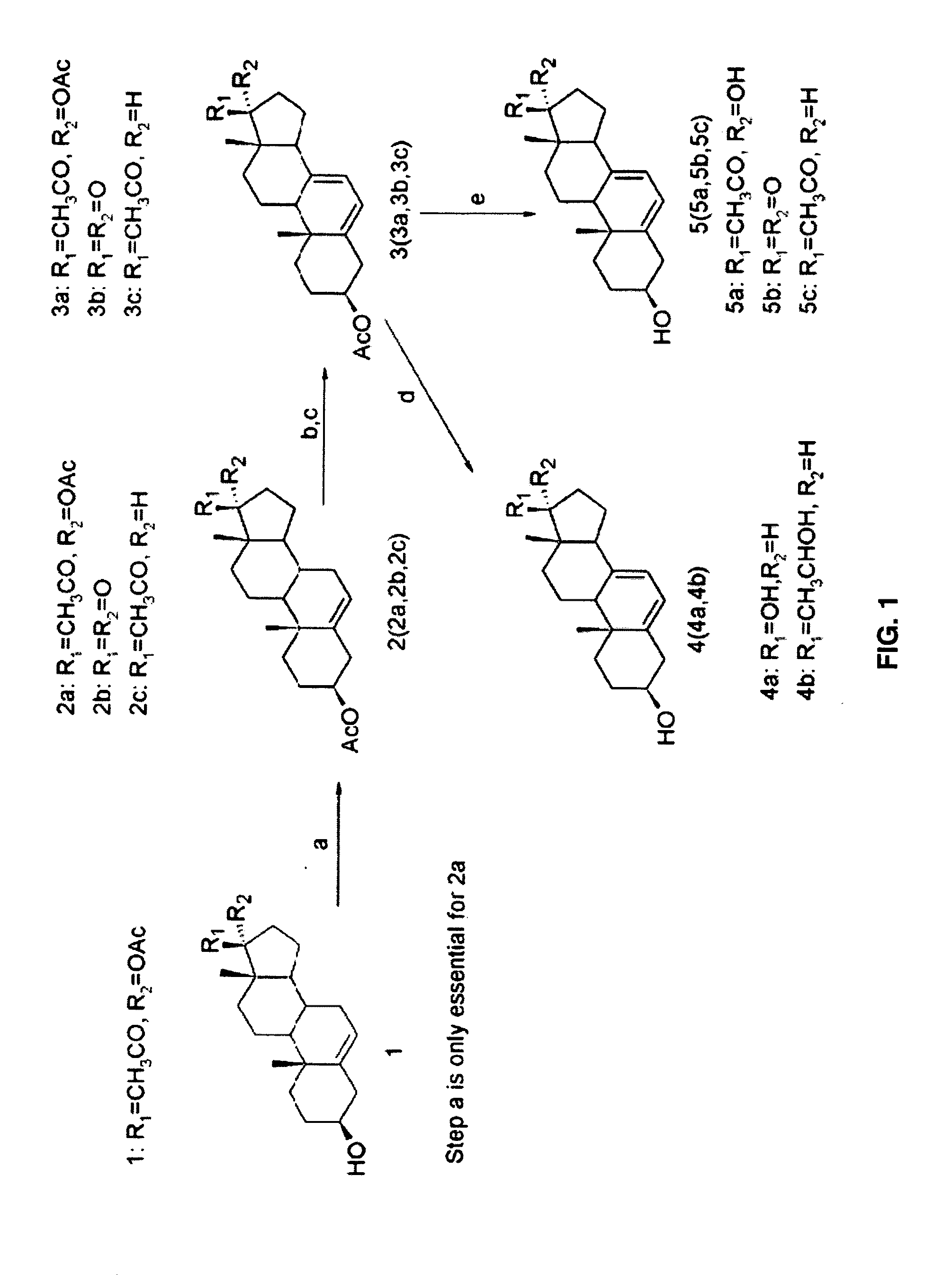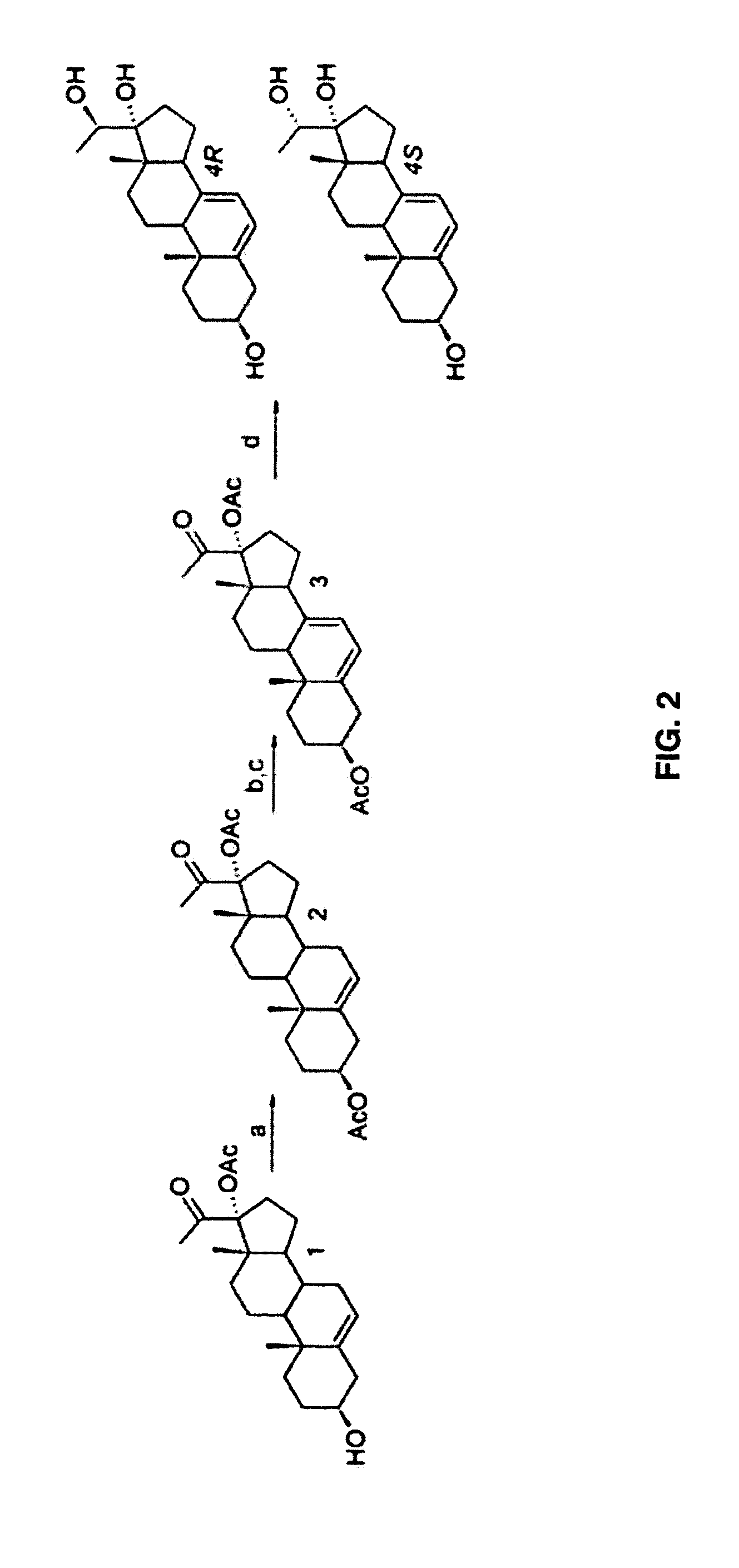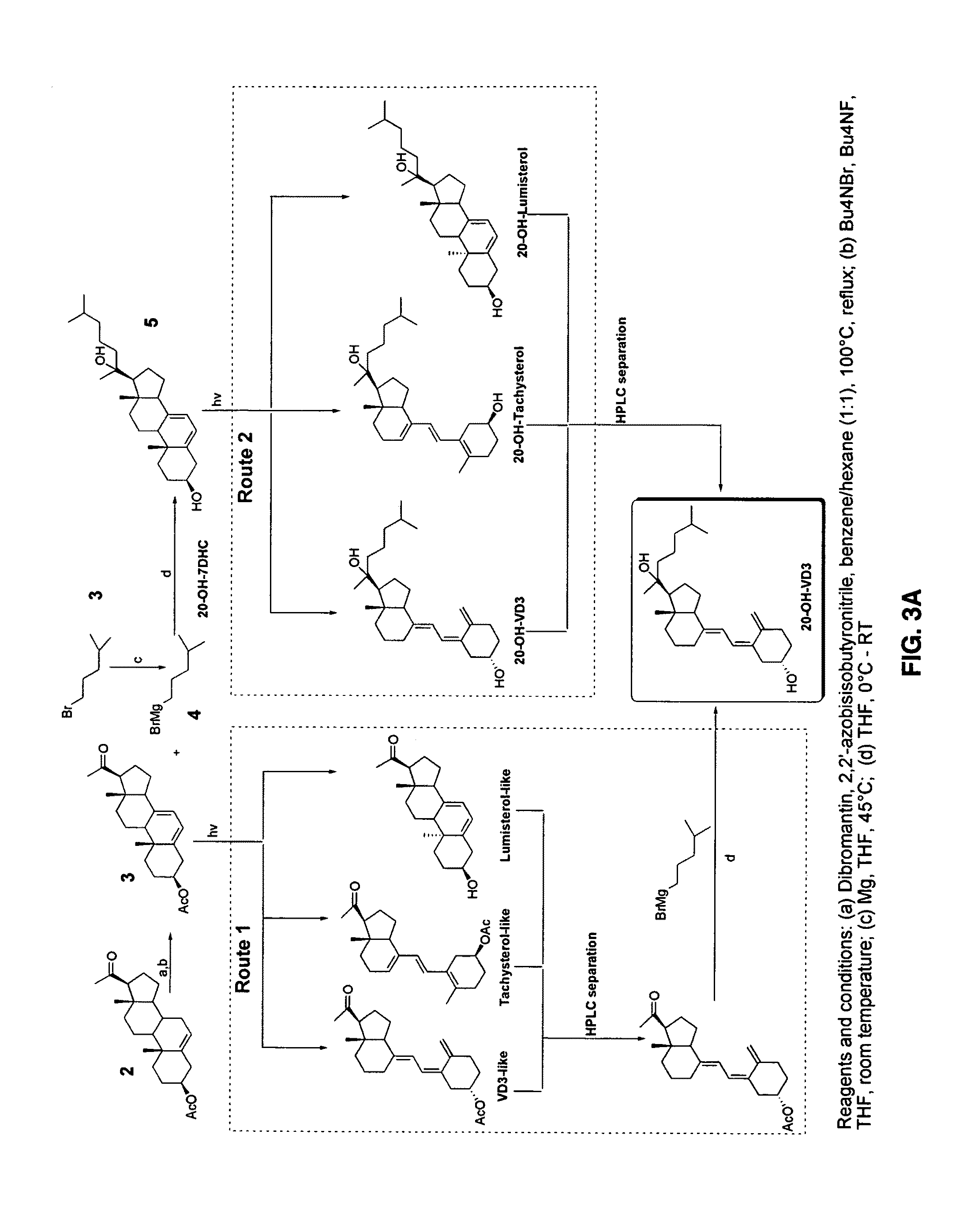Enzymatic production or chemical synthesis and uses for 5,7-dienes and UVB conversion products thereof
- Summary
- Abstract
- Description
- Claims
- Application Information
AI Technical Summary
Benefits of technology
Problems solved by technology
Method used
Image
Examples
example 1
Materials and Methods
UVB Irradiation
[0104]A methylene chloride or methanol solution of a compound (1 mg / ml) was subjected to UV irradiation for various times in a quartz cuvette (or glass HPLC insert) using Biorad UV Transilluminator 2000 (Biorad, Hercules, Calif.). Spectral characteristics of the UVB (280-320 nm) source were published previously (10) and it's strength (4.8±0.2 mW cm−2) was routinely measured with digital UVB Meter Model 6.0 (Solartech Inc., Harrison Tw p, MI). Irradiation was followed by 14 hours incubation at room temperature or 37° C. and selected products were purified by RP-HPLC chromatography. The major products were identified on the basis of their retention time and characteristic UV absorption. Initial identification w as confirmed by means of MS and NMR measurements. The quantities of products varied and were predominantly dependent on the UVB radiation dose. Fifteen minutes reaction resulted in 30-35% of pre-D-like, 20% T-like, 10% of substrate and lower ...
example 2
Chemical Synthesis Methods
[0136]The sequence of the synthesis of compounds 4 (4a, 4b) and compounds 5 (5a, 5b, 5c) is shown in FIG. 1 and of 4 (4R and 4S) is shown in FIG. 2.
General Synthesis of Compounds 4 (4a, 4b) and Compounds 5 (5a, 5b, 5c)
[0137]The acetylation of 17α-acetoxypregnenolone 1 was carried out follow ing the known procedure (31). Yield: 95%. 1H NMR (500 MHz, CDCl3) for compound 2a: δ 5.39 (d, J=5 Hz, 1H), 4.58-4.64 (m, 1H), 2.92-2.96 (m, 1H), 2.30-2.36 (m, 2H), 2.12 (s, 3H), 2.04 (s, 3H), 2.05 (s, 3H), 1.98-2.02 (m, 2H), 1.86-1.90 (m, 2H), 1.46-1.80 (m, 9H), 1.26-1.32 (m, 1H), 1.14-1.18 (m, 1H), 1.06-1.08 (m, 1H), 1.03 (s, 3H), 0.64 (s, 3H). ESI-MS: calculated for C25H36O5, 416.26, found 439.3 [M+Na]+.
[0138]Compounds 3 (3a, 3b, 3c) were synthesized according to a know n procedure (12). Yield: 40-50%. 1H NMR (500 l MHz, CDCl3) for compound 3a: δ 5.57-5.59 (dd, J=10 Hz, 3.0 Hz, 1H), 5.44-5.46 (m, 1H), 4.68-4.74 (m, 1H), 2.96-2.90 (m, 1H), 2.59-2.63 (m, 1H), 2.49-2.54 (...
example 3
Physicochemical Properties of Synthesized androsta- and pregna-5.7-dienes
UVB Irradiation of androsta- and pregna-5.7-dienes and Identification of Products
[0160]The UV conversion of androsta- and pregna-5,7-dienes were performed using a UVB light source (4.8±0.2 mW cm−2) with maximum emission spectrum in a range of 280-320 nm (35). The photolysis reaction and subsequent time-dependent conversion of products were monitored by a HPLC equipped with a diode array that enabled very rapid monitoring of products by characteristic UV spectra. Theoretically, four main products (FIG. 5) should be detected, based on their UV absorption, as was show n for photolysis of cholesta-5,7-dien-33-ol (7DHC). Products of irradiation were characterized based on their retention time related to the substrate and UV spectra. This enabled compounds with longer retention times to be assigned as L-like, D-like, T-like and pre-D-like (Table 5).
[0161]Short irradiation (20 min.; FIG. 6A) of 5c resulted in the form...
PUM
 Login to View More
Login to View More Abstract
Description
Claims
Application Information
 Login to View More
Login to View More - R&D
- Intellectual Property
- Life Sciences
- Materials
- Tech Scout
- Unparalleled Data Quality
- Higher Quality Content
- 60% Fewer Hallucinations
Browse by: Latest US Patents, China's latest patents, Technical Efficacy Thesaurus, Application Domain, Technology Topic, Popular Technical Reports.
© 2025 PatSnap. All rights reserved.Legal|Privacy policy|Modern Slavery Act Transparency Statement|Sitemap|About US| Contact US: help@patsnap.com



